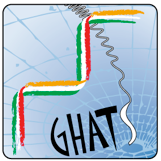General
High-energy
aperiodic
timing
software

General
High-energy
aperiodic
timing
software

The long-living RossiXTE mission was aimed at observing time variable phenomena from X-ray sources. Its main instrument, a large proportional counter which, in addition to its large collecting area, provided high time resolution with good calibration and knowledge of dead time effects, was designed for the study of fast variability. While the XRONOS package distributed by NASA/HEASARC can provide tools for the timing analysis of periodic phenomena such as pulsars, unfortunately, no comprehensive and efficient tool was provided to the community for the aperiodic timing analysis of RXTE data and none existed before. Each group was left to their own devices and had to develop a custom package.
At INAF-OAB, more than ten years ago, I started writing a package devoted to RXTE/PCA data (the HEXTE instrument, although called High-Energy X-ray Timing Experiment, is almost unusable when it comes to timing). The philosophy behind the software can be summarized in two points:
The program had to work directly from RXTE raw files, without forcing the user to produce light curves before the analysis. In other words, the program itself would accumulate its own light curves, which would be discarded at the end.
Timing analysis based on Fourier Transforms is essentially based upon two separate steps. The first is the production of Power Density Spectra (PDS) or Fast Fourier Transforms (FFT). The second is the analysis of the products. The first task is essentially an almost non-interactive process: one gives input parameters and the program delivers the final product (there is some interaction as the range of possible parameters must depend on the specific data types and a decision can only be made after reading the input files). The second task is highly interactive: read PDS files, manipulate them, fit them.
Given these starting points, the best solution was to sacrifice some speed and write the software in an integrated (graphical) environment. Although yours truly is not a fan of IDL, which I find extremely cumbersome and incredibly old-fashioned to the point of reflecting what nowadays can only be defined as bad programming, the choice fell upon IDL. The reasons are simple: it’s a very widely used package and there are existing libraries which make life easier. The downside of it is that IDL is not a freely available program and must be bought from a commercial source, which effectively limits its availability. However, since years considerable effort is going into the development of the GNU Data Language (GDL), essentially a public-domain clone of IDL. Although it is by far not complete, GDL is at a sufficiently advanced stage to be used for my purposes.
From all this, a package called MU was born. Initially only used within my institute, it was moderately exported so that it is now used by very selected people in Groningen, Rome, Mumbai and Kolkata. It worked only on RXTE/PCA data and continues to do so. The upcoming ASTROSAT mission provided the incentive to extend it and adapt it to other instruments. Although the package was in a good shape, the data format was too RXTE specific and needed to be changed and made more general.
Currently, GHATS is only available to a limited number of users in Italy, India and the Netherlands. The link below leads to the current release page, but it is password protected. How wide the future distributions will be depends essentially on the availability of funding, since it would be impossible for me to maintain a world-wide release.
Tomaso Belloni